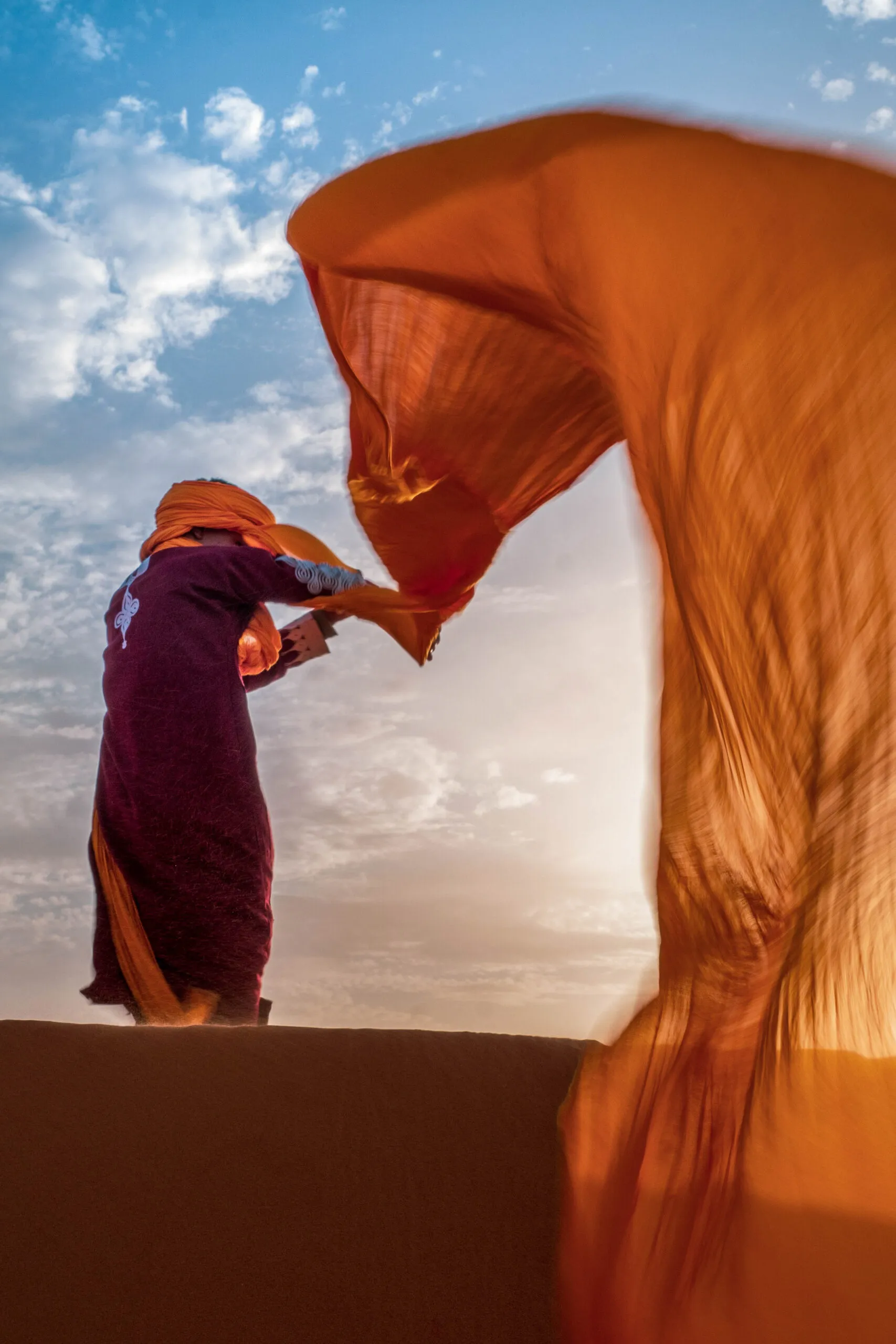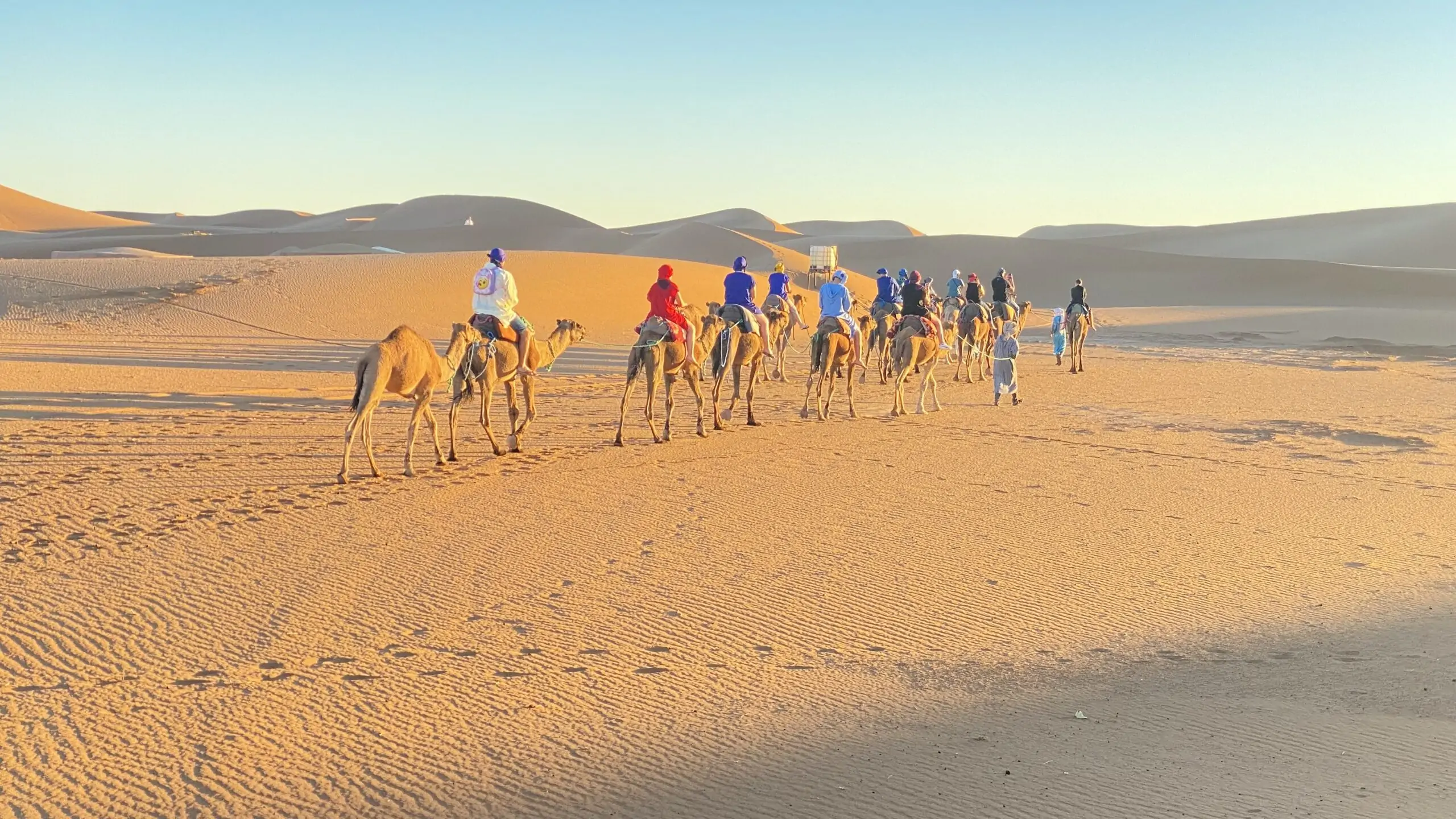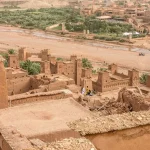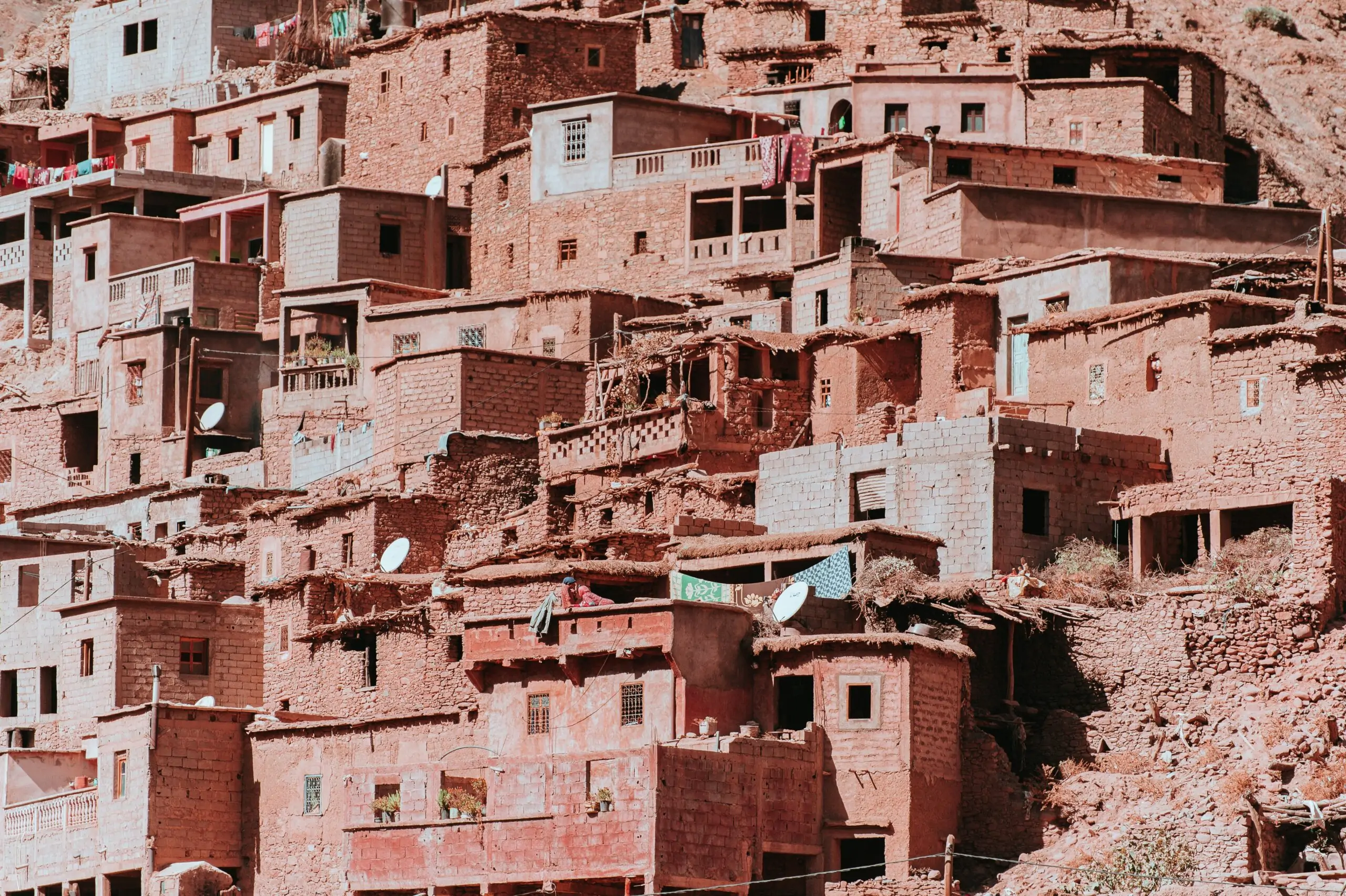
Introduction to Marrakech: The Red City
Marrakech, often referred to as the ‘Red City,’ stands as a testament to Morocco’s rich historical and cultural tapestry. The city’s moniker derives from its iconic red sandstone buildings, which imbue the landscape with a warm, inviting hue. Founded in 1070 by the Almoravid dynasty, Marrakech has evolved into a vibrant hub, blending ancient traditions with modern allure. Its labyrinthine streets, bustling souks, and grand palaces offer a unique glimpse into a bygone era, while simultaneously embracing contemporary influences.
As a major tourist destination, Marrakech captivates visitors with its multifaceted appeal. The city is a living museum, where every corner tells a story of its glorious past. The medina, a UNESCO World Heritage site, is a maze of narrow alleyways, each leading to hidden gems, from historic mosques and riads to artisanal workshops. The juxtaposition of the old and the new is palpable, making Marrakech an intriguing destination for history buffs and modern explorers alike.
Cultural significance is deeply embedded in the fabric of Marrakech. The city’s vibrant street performances, from traditional Gnawa music to mesmerizing snake charmers, create an atmosphere of enchantment and excitement. The souks, or markets, are a sensory overload, offering everything from handcrafted goods to aromatic spices. These bustling marketplaces are not merely places to shop but are cultural experiences in their own right, reflecting the soul of Marrakech.
The allure of Marrakech is further enhanced by its majestic palaces and gardens. The Bahia Palace, with its exquisite architecture and lush courtyards, offers a serene escape from the city’s hustle and bustle. Similarly, the Majorelle Garden, with its vibrant blue structures and exotic plants, provides a tranquil retreat. These landmarks underscore the city’s beauty and historical depth, making it a must-visit for any traveler.
Marrakech is a city that enchants and inspires, drawing visitors into its magical embrace. Its rich history, cultural vibrancy, and architectural splendor make it a destination unlike any other, promising an unforgettable journey through the heart of Morocco.
The Enchanting Souks: A Shopper’s Paradise
The souks of Marrakech, a labyrinth of narrow alleys and bustling market stalls, represent the beating heart of the city. As visitors meander through this vibrant marketplace, they are greeted by a sensory overload that captivates their senses. The air is thick with the heady aroma of exotic spices, while the colorful displays of textiles and ceramics create a visual feast. The echoing calls of vendors and the rhythmic hammering of artisans at work add to the lively ambiance.
A visit to the souks unveils a treasure trove of goods, each stall brimming with unique items. Spices, such as saffron and cumin, are heaped in pyramids, offering a fragrant reminder of the city’s rich culinary heritage. Textiles, ranging from intricate carpets to delicate scarves, showcase the skilled craftsmanship that has been passed down through generations. Handcrafted jewelry, made from silver and semi-precious stones, sparkles under the Moroccan sun, while beautifully glazed ceramics and intricately designed lanterns beckon to be admired.
Navigating the souks can be an overwhelming experience, but with a few tips, visitors can make the most of their shopping adventure. First, it’s essential to approach the souks with a sense of curiosity and patience. Allow yourself to get lost in the maze-like alleys; sometimes the best finds are tucked away in the most unexpected corners. Haggling is an integral part of the souk experience, and doing so with respect and good humor can lead to favorable deals. Vendors often enjoy the bargaining process, so don’t be afraid to negotiate, but always do so with a smile. Lastly, keep an eye out for quality; authentic goods often stand out amidst the plethora of choices, and investing in a few carefully chosen items can make for lasting memories of Marrakech.
The bustling souks offer more than just a shopping trip; they provide a deep dive into the cultural tapestry of Marrakech. Every corner turned, and every item purchased, tells a story of the city’s rich history and vibrant present, making the souks an unmissable aspect of any visit to the Red City.
Djemaa el-Fna: The Heartbeat of Marrakech
Djemaa el-Fna stands as the pulsating epicenter of Marrakech, a historical square that embodies the city’s vibrant spirit and cultural richness. From dawn until dusk, this central hub transforms into a dynamic tapestry of sights, sounds, and aromas, captivating visitors with its ceaseless energy. As you traverse the square, the lively atmosphere greets you with a sensory overload of street performers, each showcasing their unique talents and traditions.
Snake charmers, with their hypnotic flutes and swaying cobras, draw intrigued crowds, while henna artists skillfully adorn hands with intricate designs, a cherished Moroccan tradition. The air is filled with the melodies of traditional musicians, playing instruments that echo the rich heritage of the region. Storytellers captivate audiences with tales steeped in history and folklore, their expressive narrations bringing the past to life in the present moment.
As evening descends, Djemaa el-Fna undergoes a magical transformation. The square becomes a culinary paradise, with food stalls offering an array of delectable Moroccan dishes. The enticing aroma of sizzling meats, fragrant spices, and freshly baked bread wafts through the air, inviting you to indulge in local delicacies such as tagines, kebabs, and sweet pastries. This gastronomic journey is complemented by refreshing mint tea, a staple of Moroccan hospitality.
Beyond the culinary delights, the square is a haven for shoppers and souvenir hunters. Vendors proudly display an eclectic mix of goods, from colorful textiles and handcrafted jewelry to traditional pottery and spices. Haggling with merchants is part of the experience, adding an element of adventure to your shopping spree.
In essence, Djemaa el-Fna is more than just a square; it is the heartbeat of Marrakech. Its ever-changing landscape, filled with an array of performers, vendors, and activities, offers a unique glimpse into the soul of the city. Whether you are drawn to the captivating performances, the culinary experiences, or the vibrant market atmosphere, Djemaa el-Fna promises an unforgettable journey into the heart of Moroccan culture.
Majestic Palaces: A Glimpse into Royal Opulence
Marrakech, a city of vibrant culture and history, boasts a collection of majestic palaces that offer a peek into the opulent lifestyles of Moroccan royalty. Among these, the Bahia Palace and El Badi Palace stand out as epitomes of architectural grandeur and historical significance.
The Bahia Palace, constructed in the late 19th century, exudes a blend of Islamic and Moroccan architectural styles. Visitors are greeted by intricately designed courtyards, lush gardens, and opulent rooms adorned with stunning mosaics and carved wooden ceilings. The palace’s name, “Bahia,” translates to “brilliance,” perfectly capturing the essence of its elaborate design. Exploring the Bahia Palace, one can appreciate the meticulous craftsmanship that went into creating its detailed stucco work and zellige tile mosaics. The tranquil gardens, with their aromatic orange trees and fountains, provide a serene escape from the bustling city outside.
El Badi Palace, on the other hand, offers a contrasting yet equally fascinating experience. Built in the late 16th century by Sultan Ahmed al-Mansur, this once-magnificent palace now stands as a majestic ruin. Despite its dilapidated state, the grandeur of El Badi Palace is still evident through its vast courtyards, remnants of imposing walls, and large reflecting pools. The palace was originally adorned with Italian marble, gold, and precious stones, signifying the Sultan’s wealth and power. Today, visitors can climb to the top of the surviving structures for panoramic views of Marrakech, providing a unique perspective of the city’s skyline.
Touring these palaces, visitors are transported back in time, gaining insight into the luxurious lives of Moroccan royalty. The lush gardens, opulent rooms, and stunning mosaics collectively narrate a story of a bygone era marked by artistic excellence and regal splendor. Whether it’s the intricate details of Bahia Palace or the imposing ruins of El Badi Palace, these royal residences offer a captivating glimpse into Marrakech’s rich heritage.
The Serene Beauty of Jardin Majorelle
Amidst the vibrant chaos of Marrakech lies a serene oasis known as Jardin Majorelle. Created by the French painter Jacques Majorelle in the 1920s, this botanical garden embodies tranquility, providing visitors with a peaceful retreat from the bustling city. The garden’s lush greenery and exotic plants provide a stark contrast to the arid surroundings of Marrakech, making it a unique and enchanting attraction.
Jardin Majorelle is renowned for its striking cobalt blue buildings, which add a vibrant splash of color to the landscape. This shade, now famously known as “Majorelle Blue,” beautifully complements the verdant foliage and the array of exotic plant species housed within the garden. Visitors can meander along the shaded pathways, discovering a variety of cacti, palms, bamboo, and other rare plants that contribute to the garden’s diverse botanical collection.
In 1980, the garden was purchased by the acclaimed fashion designer Yves Saint Laurent and his partner Pierre Bergé. Their dedication to preserving and enhancing the garden has ensured that Jardin Majorelle remains a cherished landmark. Yves Saint Laurent’s influence is evident throughout the garden, from the meticulous landscaping to the inclusion of the Villa Oasis, which served as his private residence. Today, the garden also hosts the Berber Museum, showcasing the rich cultural heritage of Morocco’s indigenous people.
For visitors seeking a moment of calm in Marrakech, Jardin Majorelle provides the perfect escape. The harmonious blend of art, nature, and history creates an idyllic setting for reflection and relaxation. The garden is open daily, with varying hours depending on the season, and offers amenities such as a café and gift shop to enhance the visitor experience. Whether you’re an avid gardener, an art enthusiast, or simply seeking a peaceful retreat, Jardin Majorelle is a must-visit destination that captures the essence of Marrakech’s enchanting allure.
Culinary Delights: Savoring Marrakech’s Flavors
Marrakech, often referred to as the Red City, is not only renowned for its vibrant souks and majestic palaces but also for its rich and diverse culinary scene. The city’s flavors are a tantalizing blend of tradition and innovation, offering visitors an unforgettable gastronomic experience.
Traditional Moroccan dishes are the cornerstone of Marrakech’s culinary landscape. One cannot visit without indulging in a classic tagine, a slow-cooked stew named after the earthenware pot in which it is prepared. This dish typically features tender lamb or chicken, accompanied by a harmonious blend of spices such as saffron, cumin, and coriander, along with vegetables. Another staple is couscous, typically served with a medley of vegetables, chickpeas, and meat, creating a hearty and flavorful meal.
For those with a sweet tooth, pastilla is a must-try. This unique dish combines sweet and savory elements, with layers of thin pastry filled with spiced meat (usually pigeon or chicken), almonds, and cinnamon, all dusted with powdered sugar. The balance of flavors is a testament to Morocco’s culinary ingenuity.
Spices play a crucial role in Moroccan cuisine, infusing dishes with their distinctive aromas and tastes. Saffron, often referred to as ‘red gold,’ adds a subtle yet complex flavor, while cumin and coriander provide earthy and citrusy notes. The strategic use of these spices is what sets Marrakech’s food apart, making each bite a sensory delight.
To fully immerse yourself in the flavors of Marrakech, a visit to local restaurants and street food stalls is essential. For an upscale dining experience, Al Fassia is highly recommended. This women-run restaurant offers an array of traditional dishes with exceptional quality and presentation. For a more casual setting, the food stalls in Jemaa el-Fnaa square are a must-visit. Here, you can savor freshly grilled meats, spicy harira soup, and delectable pastries, all while enjoying the lively atmosphere of the bustling square.
Exploring Marrakech’s culinary delights is a journey of flavors that reflects the city’s rich cultural heritage and innovative spirit. From traditional dishes to modern culinary creations, the Red City promises an unforgettable dining experience for every visitor.
Vibrant Street Performances and Cultural Experiences
Marrakech, often referred to as the “Red City,” offers a rich tapestry of cultural experiences and vibrant street performances that captivate visitors from around the globe. The city’s streets come alive with the sounds of traditional Moroccan music, the rhythms of which are deeply intertwined with its cultural identity. Gnaoua music, with its hypnotic beats and spiritual chants, is often performed in public squares, inviting both locals and tourists to lose themselves in its captivating melodies.
Dance, too, plays a significant role in Marrakech’s cultural landscape. The Aissawa and Ahidous dances, performed by local troupes, are a visual and auditory spectacle, showcasing the intricate footwork and traditional costumes that have been passed down through generations. These performances are not just entertainment; they are a living testament to Morocco’s rich heritage and a means of preserving its cultural traditions.
Storytelling, known as “hikayat,” is another cherished art form in Marrakech. Master storytellers, or “hakawatis,” gather crowds in Djemaa el-Fna, the city’s main square, to share tales of heroism, love, and adventure. These stories, often accompanied by musical instruments, paint vivid pictures of Morocco’s past and present, offering listeners a deeper understanding of the cultural fabric that defines Marrakech.
The city’s cultural vibrancy is further amplified during its numerous festivals and events. The Marrakech Popular Arts Festival, held annually, brings together artists and performers from across the country to celebrate Morocco’s diverse artistic traditions. The Marrakech International Film Festival, on the other hand, attracts cinephiles and industry professionals, transforming the city into a hub of global cinematic exchange. These events not only highlight the city’s cultural diversity but also provide a platform for artistic expression and international collaboration.
In essence, the street performances and cultural experiences in Marrakech are a testament to the city’s dynamic and multifaceted identity. They offer visitors a unique opportunity to immerse themselves in the local culture, creating memories that resonate long after the journey ends.
Practical Tips for Visiting Marrakech
Marrakech, with its enchanting allure, offers an unforgettable experience for travelers. To ensure a memorable and seamless visit, it is essential to consider a few practical tips. Understanding the best time to visit Marrakech is crucial; the most favorable periods are from March to May and September to November, when the weather is pleasant and conducive for exploration.
Respecting local customs and etiquette is equally important. Marrakech is a city rich in traditions, and visitors are encouraged to dress modestly, particularly when visiting religious sites. Engaging with locals using basic Arabic phrases such as “Shukran” (Thank you) and “Salam Alaikum” (Peace be upon you) is appreciated and fosters positive interactions.
Safety is paramount, and travelers should remain vigilant, particularly in crowded areas like the bustling souks. It is advisable to keep personal belongings secure and be cautious of pickpocketing. Using reputable transportation services and avoiding unlicensed taxis can prevent potential issues. Additionally, travelers should be aware of common scams and be prepared to negotiate prices in markets.
When it comes to accommodations, Marrakech offers a range of options to suit various budgets and preferences. From luxurious riads in the Medina to modern hotels in the Gueliz district, there is something for everyone. Booking accommodations well in advance, especially during peak tourist seasons, ensures a comfortable stay.
To make the most of a visit to Marrakech, immersing oneself in the local culture is key. Participating in a traditional Moroccan cooking class, taking a guided tour of the historic palaces, or enjoying vibrant street performances in Jemaa el-Fnaa can enhance the overall experience. Additionally, exploring the lesser-known corners of the city, such as the tranquil Jardin Majorelle or the artistic quarters, offers a unique perspective of Marrakech.
By following these practical tips, travelers can navigate Marrakech with ease and fully savor the magical essence of the Red City and also visit the Real Desert In Morocco Desert Camp.







